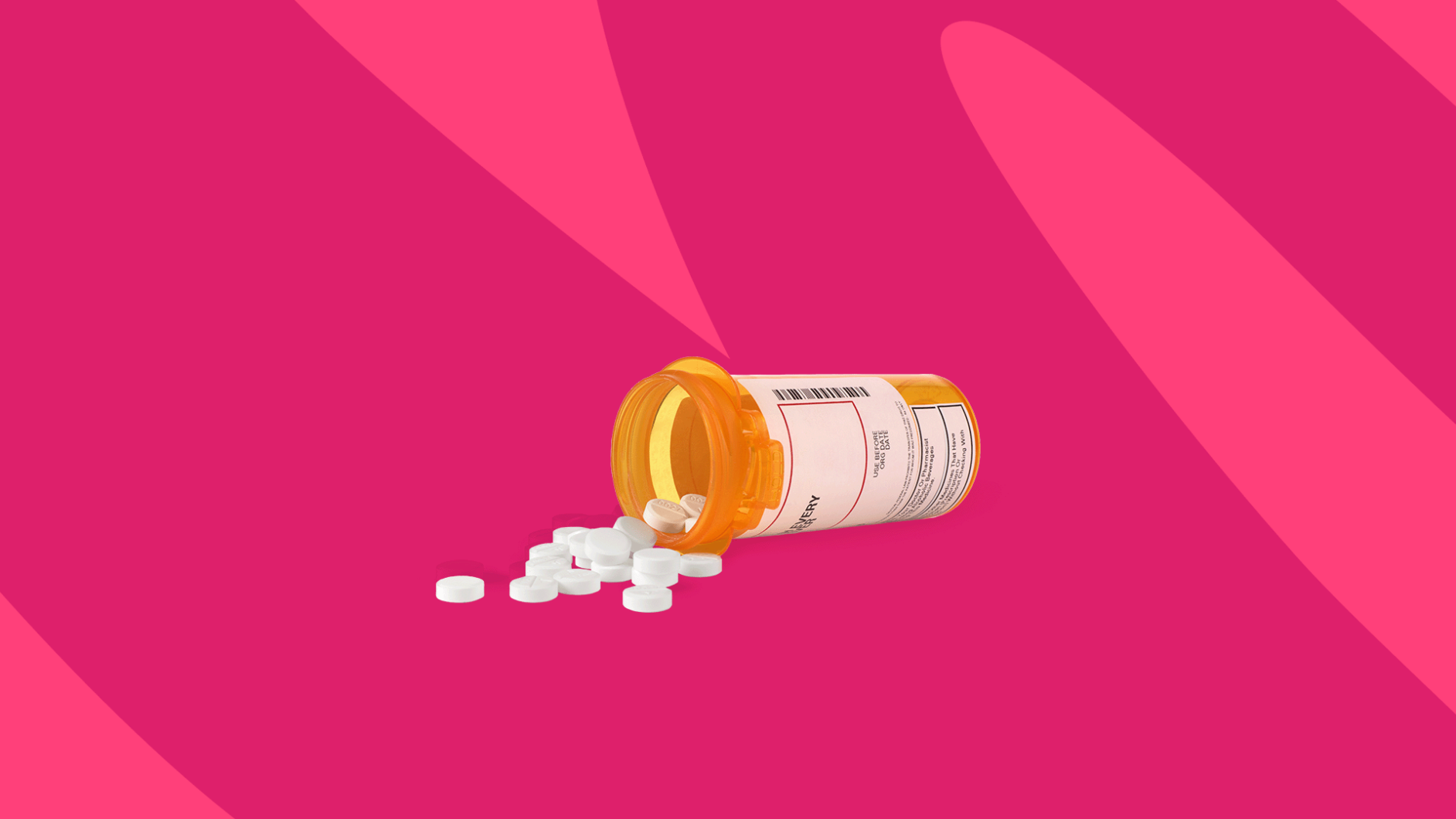Common labetalol side effects | Serious side effects | Orthostatic hypotension | Cardiovascular problems | Side effects timeline | Contraindications | Warnings | Interactions | How to avoid side effects | How to treat side effects
Labetalol is a generic prescription drug used to treat chronic high blood pressure (hypertension) and as an emergency treatment when blood pressure gets dangerously high (hypertensive crisis). It is most commonly used for emergency blood pressure treatment, for high blood pressure in pregnant women, and to treat elevated blood pressure before and after surgery. Labetalol is considered a beta blocker, but it also works as another type of blood pressure drug called an alpha blocker. As a beta blocker, labetalol lowers blood pressure by both widening blood vessels and slowing down the heart. As an alpha blocker, labetalol lowers blood pressure by preventing blood vessels from tightening. Labetalol can be taken as a tablet, but in an urgent situation in a hospital, labetalol is usually administered as an injection or IV. Labetalol is generally mild in terms of side effects that are usually more significant at higher doses.
RELATED: What is labetalol?
Common side effects of labetalol
Dizziness is the most common side effect of labetalol tablets. In clinical trials, 11% of people experienced drug-related dizziness. In order of incidence, the most common side effects of labetalol tablets are:
- Dizziness
- Nausea
- Tiredness
- Stuffy nose
- Stomach upset
- Headache
- Ejaculation failure
- Vertigo
- Breathing problems
People on high doses are more likely to experience:
- Vomiting
- Erectile dysfunction
- Tingling sensations
- Fluid retention
In clinical trials for labetalol injections, the most common side effect was a sudden drop in blood pressure when sitting up or standing up, called postural hypotension or orthostatic hypotension. Over half of people getting labetalol injections can expect to have this problem, but it will depend on how soon after the injection the person sits or stands up.
Serious side effects of labetalol
Serious side effects of labetalol include:
- Congestive heart failure
- Slow heartbeats
- Heart rhythm abnormalities
- Heart block
- Worsening of chest pain (angina)
- Raynaud’s phenomenon
- Asthma attack (bronchospasm)
- Liver poisoning
- Lupus
- Severe allergic reactions
Labetalol and orthostatic hypotension
Orthostatic or postural hypotension is the most common side effect of labetalol injections. Almost 60% of participants in the labetalol injection clinical trials experienced this problem. It is more likely to occur in people who try to sit up, stand up, or are tilted up in their beds within three hours of getting the injection. It can also happen to people taking labetalol tablets, but it’s less common. Postural hypotension is a serious medical condition because people can fall, have accidents, or injure themselves. Immediately tell the prescriber or other healthcare professional if faintness or lightheadedness occurs when standing up.
Labetalol and cardiovascular problems
Labetalol slows down the heart and decreases the amount of blood pumped by the heart. For this reason, it can worsen many existing heart conditions including heart failure, heart rhythm problems, and chest pain. It can also decrease the ability of the heart to pump blood after a coronary bypass graft surgery. These serious side effects normally don’t occur in people with a healthy heart. People with cardiovascular problems, however, should discuss the risks with the prescribing healthcare provider.
How soon do labetalol side effects start?
Most of labetalol’s commonly-experienced side effects start early in treatment such as nausea, dizziness, fatigue, and upset stomach. For people receiving an injection, postural hypotension is most likely to be a problem in the first three hours. Slowing of the heart (bradycardia) can happen right after the first dose or during an injection. Some other serious side effects, however, may take a few weeks or months to manifest.
How long do labetalol side effects last?
Labetalol is commonly used in urgent situations like when blood pressure is dangerously high, during pregnancy, or before and after surgery. In those cases, side effects will improve when the drug is discontinued. For people taking labetalol for chronic high blood pressure, many of the mild side effects will improve over time as the body adapts to the drug. It might help to know that in clinical trials, the dropout rate due to side effects was slightly lower than it is for other beta blockers. Any remaining side effects should fade when the drug is discontinued. It should take about a day for that to happen.
RELATED: How to lower blood pressure quickly and naturally
What are the long-term side effects of labetalol?
Labetalol has no side effects specifically caused by long-term use.
Labetalol contraindications
Labetalol slows down the heart, so it is not used in people with:
- Severely slow heart rate
- Slow heartbeat due to a problem with the heart’s natural “pacemaker” (sinus bradycardia)
- Moderate to serious heart block
- A heart that doesn’t pump enough blood or oxygen to the body (cardiogenic shock)
- Uncontrolled or life-threatening heart failure
Labetalol is also never prescribed to people with:
Pregnancy
Labetalol is considered a first-line antihypertensive to treat high blood pressure in pregnant women. With an extensive history of use in pregnant women, there is no evidence that labetalol is associated with birth defects, miscarriages, or other pregnancy problems.
Breastfeeding
Labetalol is present in human breast milk in small amounts, but its safety for a nursing baby has not been studied. The risk to the infant is considered low.
Children
The FDA has not approved labetalol for use in children and adolescents. However, in urgent or emergency cases of severely high blood pressure, labetalol is commonly used in children. Whatever side effects labetalol may cause in a child is outweighed by the seriousness of the blood pressure crisis.
Seniors
People older than 65 can be given labetalol safely, but healthcare providers may be cautious or monitor the person for side effects. The main concerns are falls and injuries due to dizziness or postural hypotension, possible heart problems, and an increased risk of side effects due to declining liver function.
Labetalol warnings
Problems due to pre-existing conditions, overdose, and withdrawal are all possible when taking labetalol.
Cautions
Some pre-existing conditions can be worsened by labetalol. They aren’t so risky that labetalol is prohibited, but they will require extra measures such as monitoring side effects, regular testing, or lower doses. Before taking labetalol, notify the prescribing doctor of any pre-existing conditions, including:
- Diabetes: Labetalol may affect blood sugar levels or mask the signs of low blood sugar (hypoglycemia) in people with diabetes.
- Adrenal gland tumor: Labetalol may worsen high blood pressure in people diagnosed with pheochromocytoma, so it’s generally avoided as a long-term treatment.
- Thyroid problems: Labetalol can mask symptoms of hyperthyroidism or thyroid disease.
- Surgery: General anesthesia and surgery are riskier in people taking beta blockers.
Labetalol is also used cautiously in people who have peripheral vascular disease, Wolff-Parksinson-White (WPW) heart syndrome, myasthenia gravis, and liver problems.
Abuse and dependence
Labetalol has not been associated with drug abuse or physical dependence.
Withdrawal
Although labetalol does not cause withdrawal symptoms, it should not be abruptly discontinued in people with coronary artery disease. Because of the risk of chest pain, heart rhythm abnormalities (such as irregular heartbeat), and heart attack, people with coronary artery disease will be prescribed a gradually decreasing dose for one to two weeks when it’s time to stop taking the drug.
Overdose
Get medical help if an overdose of labetalol is taken. Primary symptoms include low blood pressure, slow heartbeats, and trouble breathing. Severe symptoms include seizures, airway closure (bronchospasm), and heart failure.
Labetalol interactions
Drug interactions usually mean that combining two drugs will worsen the effects of one or both drugs. In some cases, a drug interaction could be health-threatening, so the two drugs are never combined. The antidepressant Marplan (isocarboxazid), is never prescribed with blood pressure drugs because of the hazards. The antipsychotic thioridazine is also never prescribed with labetalol because of risks to the heart.
Labetalol affects heart rate, heart rhythm, and blood pressure, so healthcare professionals are cautious about prescribing labetalol with drugs that also affect heart rate, heart rhythm, and blood pressure. These include:
- Other blood pressure drugs, particularly other beta blockers or calcium channel blockers
- Antiarrhythmics (heart rate and heart rhythm medications)
- Digitalis medications used to treat heart failure and irregular heart rate
- Migraine drugs (ergots)
- Drugs that raise blood pressure such as epinephrine
Other drugs that could cause problems when taken with labetalol include:
- The ulcer drug cimetidine
- Bronchodilators like albuterol
- General anesthetics
How to avoid labetalol side effects
Following a few simple measures may be enough to successfully avoid most side effects of labetalol.
1. Start by giving the prescriber a complete medical history
One of the surest ways to prevent side effects is to make sure the prescriber has a complete picture of your health. The most important issues that the prescriber needs to know are:
- Cardiovascular problems including chest pain, heart disease, or heartbeat problems
- Asthma, emphysema, or bronchitis
- Diabetes
- Pheochromocytoma, a type of adrenal gland cancer
- Liver disease
- Any upcoming lab tests
- Any upcoming coronary artery bypass surgery
- Pregnancy or any plans to become pregnant
- Breastfeeding or plans to breastfeed
2. Tell the prescriber about any drugs being taken
To avoid side effects caused by drug interactions, the prescriber should have a complete picture of all the prescription drugs, over-the-counter medicines, and dietary supplements that are regularly taken. It does help to have this list written out so that it can be easily shared with prescribers and pharmacists. They will particularly need to know about:
- Blood pressure drugs
- Heart rhythm drugs
- Diabetes medications
- Inhalers
- Cimetidine
3. Follow the directions
The prescriber will tell you how much to take and when to take it. These instructions are also written on the prescription label and in the included drug information. Follow these instructions to the letter. If a dose is missed, it can be taken when remembered. However, if it’s almost time for the next dose, skip the missed dose and take the next dose as instructed.
4. Stand up and move slowly
One way to prevent dizziness is to sit up and stand up slowly.
5. Go easy on alcohol
Many of labetalol’s side effects will feel worse if alcohol is added to the mix including dizziness, fatigue, low blood pressure, and cold hands and feet.
6. Avoid caffeine
Speaking of cold hands and feet, that’s one side effect of caffeine. So if labetalol is causing problems like this, try to avoid caffeine.
7. Wear warm gloves and socks
To prevent cold hands or feet, cover them with warm gloves or socks, especially when temperatures are chilly. Also, because the problem is being caused by poor blood flow, take off tight watches, bracelets, or tight socks to help get more blood to the hands and feet.
How to treat side effects of labetalol
Fortunately, labetalol has few side effects. Most can be handled with a few simple cures. In some cases, however, medical advice or medical help is needed.
Drowsiness or dizziness
Sit down and rest. When the dizziness or sleepiness has passed, then go about the day. If dizziness comes on when standing up, then sit down again, rest, and get up slowly. Seek medical attention for any episodes of fainting or falls.
Cold hands or feet
Warm water can help if hands or feet get too cold. If the problem doesn’t go away, or if you notice skin color changes, talk to your healthcare provider.
Feeling faint when standing up
If dizziness or lightheadedness comes on when standing up, this is a sign of orthostatic hypotension. This usually happens to people who have gotten a labetalol injection in a hospital. Immediately report this side effect to a healthcare professional.
Low blood pressure
Low blood pressure is always a risk with blood pressure medicines. If symptoms appear, get medical attention. Here are a few of the most prominent signs that blood pressure is too low:
- Lightheadedness
- Feeling faint
- Passing out
- Feeling tired
- Weakness
- Blurred vision
Liver problems
Although it’s uncommon, labetalol can damage the liver. In most cases, the problem is reversible if the drug is stopped. Severe liver damage and even death are possible, so immediately contact the prescriber if any of the symptoms of liver disease are noticed including:
- Upper abdominal pain, particularly on the right side
- Dark urine
- Appetite loss
- Nausea and vomiting
- Yellowing of the skin or eyes
Sources
- Labetalol, Drugs and Lactation Database
- Labetalol, Epocrates
- Labetalol, LiverTox
- Labetalol, StatPearls
- Labetalol drug summary, Prescriber’s Digital Reference
- Labetalol hydrochloride tablet prescribing information, U.S. National Library of Medicine
- Labetalol may be the best option for pregnant women with hypertension, Healio











